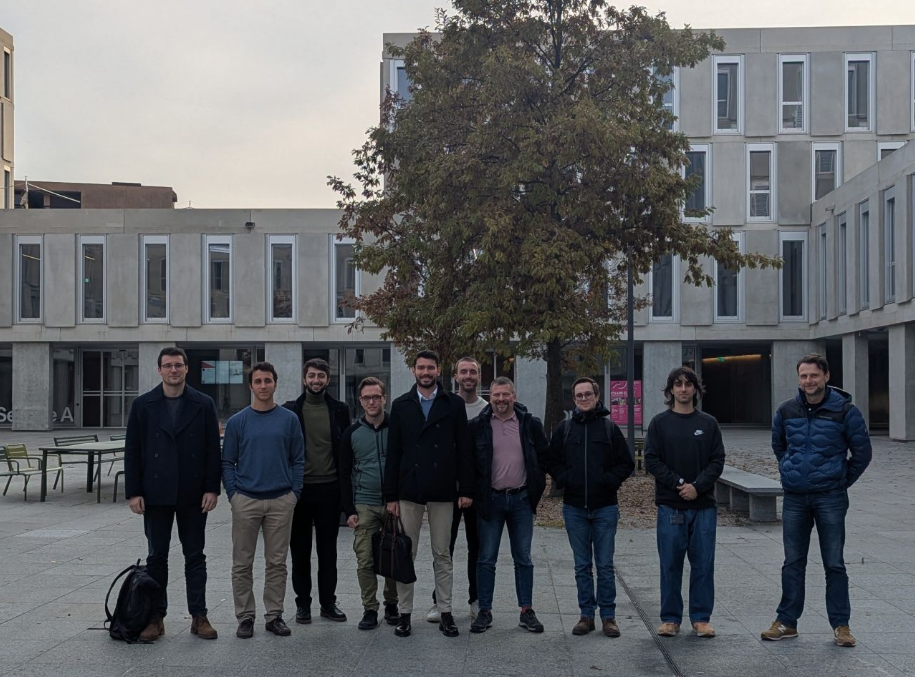Pooling: a strategic challenge for managing logistics flows
The term “pooling” is increasingly used in the logistics sector, but what does it really encompass? It refers to the practice of sharing resources, particularly infrastructure and transport means, to optimize costs and improve operational efficiency. This strategy is being widely adopted by companies aiming to reduce expenses while addressing today’s ecological and economic challenges.
In this article, we will explore the two most common types of pooling: intra-company pooling and inter-company pooling. Finally, we will delve into the European VSPOOL project, in which the company kheoos plays a key role.
What is pooling?
In a logistics context, pooling refers to the mutualization of resources among various stakeholders to optimize costs and improve efficiency. Concretely, this means that multiple companies or units within the same company share resources such as warehouses and equipment, thus reducing overall expenses.
The primary idea is to maximize the utilization of each resource’s capacity while lowering fixed costs (such as transport or storage expenses). This model also helps decrease the ecological footprint by avoiding unnecessary trips and optimizing storage space.
There are two main types of pooling: internal pooling, which focuses on resources within a single company, and geographic or inter-company pooling, which involves resource-sharing between different companies located within the same geographic area.
Intra-company pooling: sharing resources among an enterprise’s various sites
Intra-company pooling involves optimizing resources within the same organization, often across its various sites or warehouses. Let’s consider an example of a company that owns multiple warehouses in different regions. Instead of operating each warehouse independently, the company can choose to centralize certain logistics operations in one location. This reduces operational costs (transport, stock management, etc.) and maximizes the use of available space.
Imagine a company with three warehouses in different cities. Instead of maintaining separate stocks in each warehouse, the company can decide to pool the flows between these sites. This involves coordinating stocks so that the most in-demand products in one region are transported centrally, while less popular items are stored in one warehouse.
This optimized management allows the company to lower transportation and storage costs while ensuring faster responses to customer demand.Intra-company pooling also offers flexibility. When one unit experiences a surge in demand, it can draw on additional resources from other company sites. This enables quicker responses to market needs while limiting operational costs. In essence, this form of pooling is a logistics resource management strategy that improves efficiency and contributes to a more sustainable and responsible future.
Geographic or inter-company pooling: sharing resources between different companies
The second type of pooling, which has seen growing popularity in recent years, is geographic or inter-company pooling. Unlike intra-company pooling, this involves resource-sharing between multiple companies located in the same geographic area.
This approach reduces transportation costs and addresses environmental challenges by optimizing routes and cutting CO2 emissions. By pooling logistics resources among various stakeholders, unnecessary trips are minimized, and transport means are used more effectively.
Let’s take the example of an industrial zone, such as the ZI de Centr’alp. In this area, multiple companies (A, B, and C) could decide to share transport means, warehouses, or logistics equipment to reduce the costs associated with trips or space usage.
Companies located in the same geographic area can agree to use a shared warehouse, where each company stores its products. This mutualization reduces rental costs and stock management expenses. Such inter-company pooling can contribute to a more sustainable and responsible future.
This type of pooling is particularly relevant in areas with high company density, where resource-sharing can lead to significant financial and environmental savings.
The European VSPOOL project: an innovative initiative in pooling
In the context of logistics resource-sharing, the company kheoos plays a key role in the European VSPOOL project. This project aims to promote the use of geographic pooling among several companies in the same area, with the goal of reducing transport costs and encouraging more ecological practices. VSPOOL is part of an innovative initiative where inter-company collaboration maximizes logistics flow efficiency while addressing current environmental challenges.
kheoos, as a member of the VSPOOL project alongside companies like MICHELIN, JOHN COCKERILL, SUPSI, and INSPIRE, is involved in implementing shared logistics solutions benefiting multiple companies within the same geographic area.
kheoos contributes significantly to this project by providing a platform that facilitates stock mutualization: mykheoos. This collaborative approach not only promotes cost savings but also reduces the ecological footprint by minimizing unnecessary trips and greenhouse gas emissions.

Conclusion: pooling, a future-oriented solution for more economic and ecological logistics
In conclusion, pooling enables substantial cost savings while helping reduce the ecological footprint of logistics activities. The example of kheoos in the European VSPOOL project demonstrates how resource-sharing can address both economic and environmental challenges. In the era of energy transition and the pursuit of profitability, pooling emerges as an essential strategic solution for companies striving to optimize operations and preserve the planet.
Would you like to be notified when new articles are published? Fill out the form!




